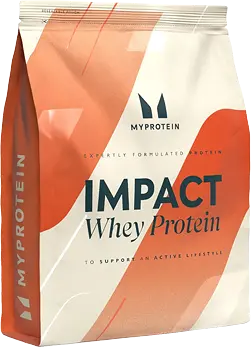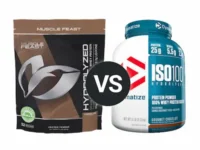Knowledge BaseYou're Questions Answered
How much whey protein powder should I use?
Whey protein powder is a widely used supplement known for its high-quality protein content and fast absorption rate. It is commonly used by athletes, bodybuilders, and individuals seeking to increase their protein intake. The appropriate amount of whey protein powder to use depends on various factors, including individual protein needs, dietary goals, and overall daily protein intake.
General Guidelines for Whey Protein Powder Intake
1. Daily Protein Requirements
The Recommended Dietary Allowance (RDA) for protein for the average adult is approximately 0.36 grams of protein per pound of body weight (0.8 grams per kilogram). However, individuals with higher protein needs, such as athletes or those engaging in regular resistance training, may require more protein—typically around 0.54 to 0.91 grams per pound of body weight (1.2 to 2.0 grams per kilogram)1. It's important to account for all sources of protein in your diet when calculating your intake.
2. Typical Serving Size
A typical serving size of whey protein powder is around 30 grams (about 1 scoop), which generally provides 20 to 25 grams of protein. This amount is commonly recommended per serving, particularly for use as a post-workout supplement to support muscle recovery and growth2.
3. Number of Servings Per Day
For most individuals, consuming one to two servings of whey protein powder per day is sufficient to help meet daily protein requirements, especially if combined with protein from whole food sources. For those with higher protein needs, additional servings may be necessary, but it's crucial to stay within the recommended protein intake to avoid excessive consumption.
Individual Considerations
- Timing: Whey protein is often consumed post-workout due to its rapid absorption, which can help replenish amino acids and support muscle repair. It can also be used as a convenient protein source between meals or as a meal replacement when needed.
- Digestive Tolerance: Individuals with lactose intolerance should opt for whey protein isolate, which contains lower levels of lactose compared to whey protein concentrate. Additionally, hydrolyzed whey protein is pre-digested, making it easier to absorb and potentially reducing digestive discomfort.
- Dietary Goals: Whether the goal is muscle building, weight loss, or maintenance, protein intake should align with these objectives. For muscle growth, a higher protein intake is often recommended, while for weight loss, whey protein can help increase satiety and preserve muscle mass.
- Phillips, S. M., & Van Loon, L. J. C. (2011). Dietary protein for athletes: From requirements to optimum adaptation. Journal of Sports Sciences, 29(sup1), S29-S38.
- Hoffman, J. R., & Falvo, M. J. (2004). Protein–which is best? Journal of Sports Science & Medicine, 3(3), 118-130.
Related Questions

Your Answer
We are a participant in the Amazon Services LLC Associates Program, an affiliate advertising program designed to provide a means for us to earn fees by linking to Amazon.com and affiliated sites.






